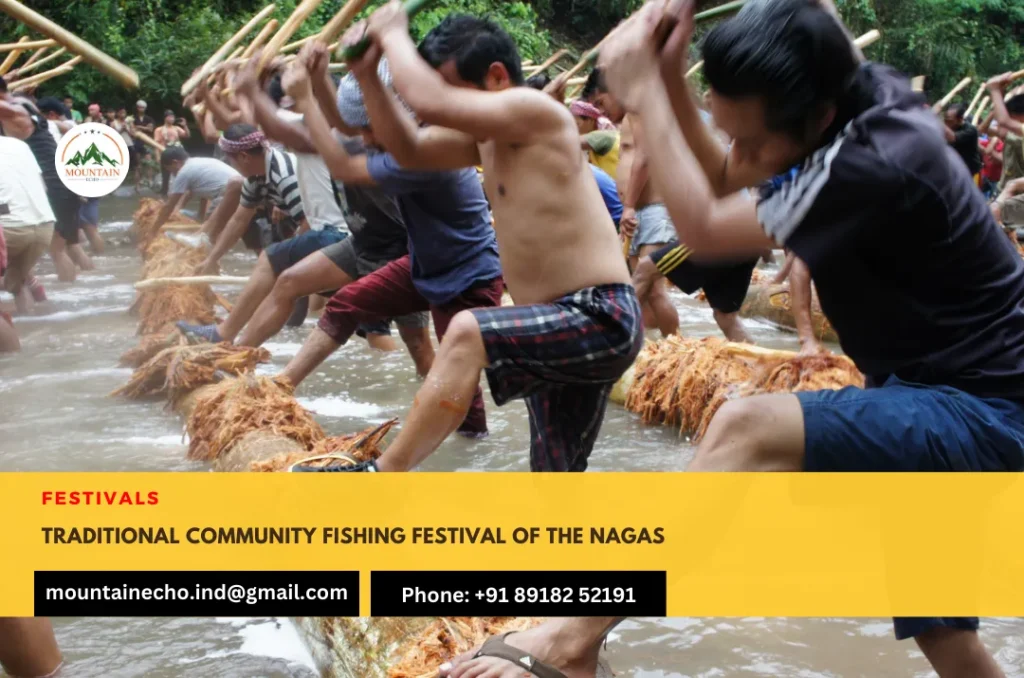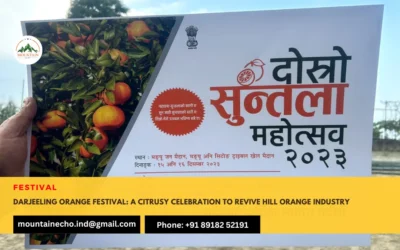Traditional Community Fishing: A Cultural Heritage of Naga Tribal Populations
WhatsApp Channel
Join Now
Indigenous community fishing is part of the cultural heritage of Naga tribal populations. Nagaland and other states of Northeast India have a rich diversity of fish species and traditional fishing practices are conducted with varying social complexity. Indigenous fishing using piscicidal plants is a traditional practice with significance in environmental, cultural and livelihood sustainability.
Inter-community and intra-community traditional fishing practices
Two types of traditional fishing practices are usually followed in Nagaland, inter-community and intra-community fishing. These practices differ in terms of their operations, execution, the number of participants and the plant used.
Inter-community fishing is considered a ‘fishing festival’ and involves a series of events and preparations that occur several weeks prior to the activity due to its complexity and the involvement of a large number of participants. Fishing typically takes place when water levels are low.
The process begins with a meeting led by the village chief, elders and officials from both participating tribes. During this meeting, they discuss and plan the entire fishing process and determine the ideal date for the activity. This planning takes place weeks or even months in advance.
During the pre-fishing planning period, the operational plan and traditional customs to be followed are shared among the participating tribes, and the fishing location is decided. Only men are allowed to participate in the fishing activity from the beginning. However, women are allowed to join in during the fish harvesting phase.
Intra-community traditional fishing is organized under the direction of the village chief, elders, and a chairperson. The community members also gather for a meeting to discuss the procedures and receive guidance on traditional values and customs associated with the fishing practice.
The Fishing riutal
Log platforms are constructed across the river using logs gathered from the forest by men. The size and arrangement of these platforms depend on the number of participants and the river’s dimensions. These log platforms are positioned so that each community faces the other with a distance of about 25 meters between them.
The logs are sometimes fastened together to prevent rolling during the pounding process. Prior to pounding the roots, the activity is initiated with safety and luck invocations through speeches, prayers, cultural quotes, and a war cry led by the oldest person or the chairman present.

A small tree pole is used as a hammer to pound the roots for about one hour, with frequent drenching of the roots in water to release the chemical compounds. The root juices produce a brown-reddish color, and the beaten roots are dropped into the water to enhance the effectiveness of the piscicide.
The males from each tribe participate in the rhythmic pounding of the roots while singing and chanting war cries as a sign of respect to ancestors and each other. The rhythmic pounding and chanting symbolize unity, respect, and peaceful harmony between the communities.
Distribution of the harvests
After the pounding and release of fish poison by participating men, children, men, and women all take part in collecting fish from the river. This occurs around half an hour after the pounding is completed. Various fishing equipment is used during the fish harvest, including cast nets, hooks and lines, and smaller nets.
In inter-community fishing, the fish caught by individuals are collected and stored clan-wise. Traditional values guide the distribution of fish, with the eldest person receiving the largest fish, followed by the second-largest for the second eldest.
In the case of intra-community fishing, the harvested fish are distributed equally among the participants. Customary practices, such as reserving the largest fish for the oldest person in the village, are followed.
Cultural heritage & sustainability
This inter-community fishing festival is considered one of the largest in Nagaland and plays a significant role in preserving the cultural heritage of the Naga tribes. Traditional practices, including community fishing and jhum cultivation, are deeply rooted in the cultures, beliefs, and customs of the tribal people. They have been sustainable for decades.
Telegram Channel
Join Now



